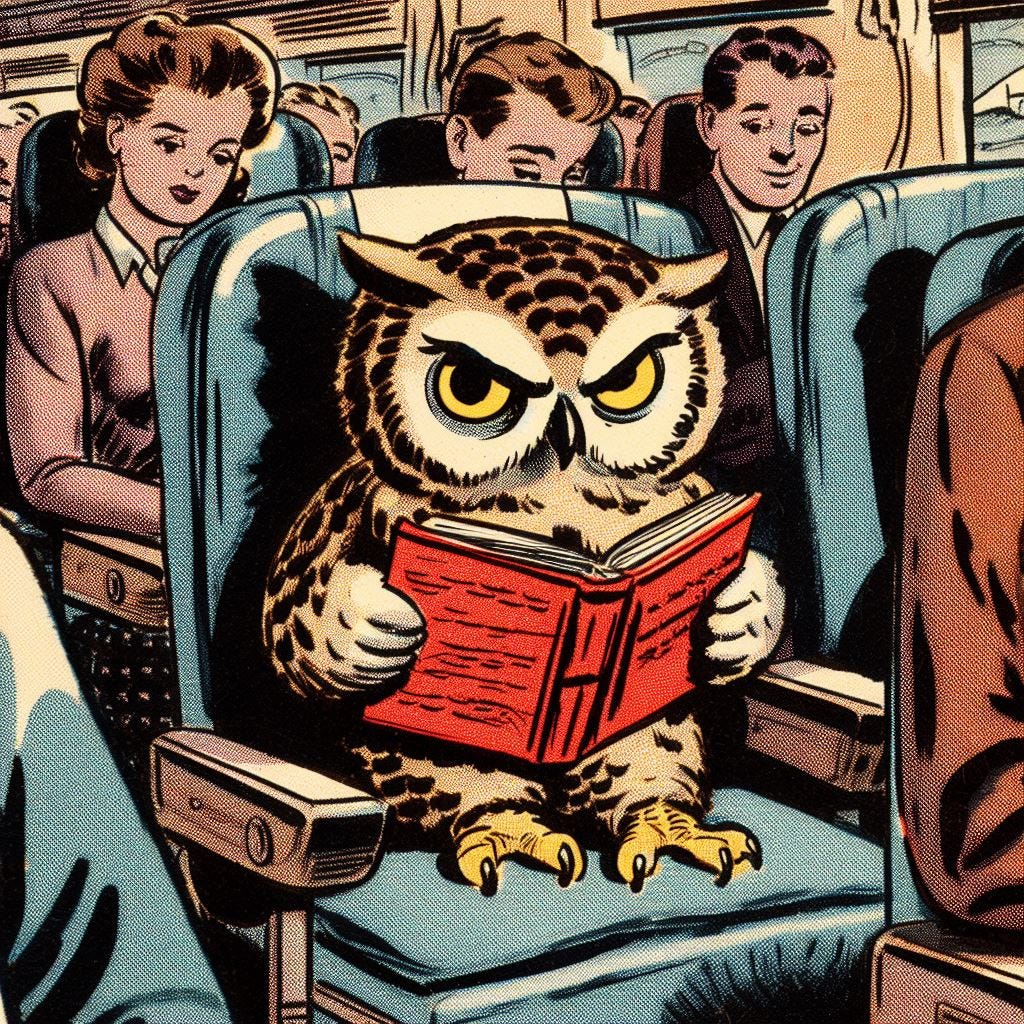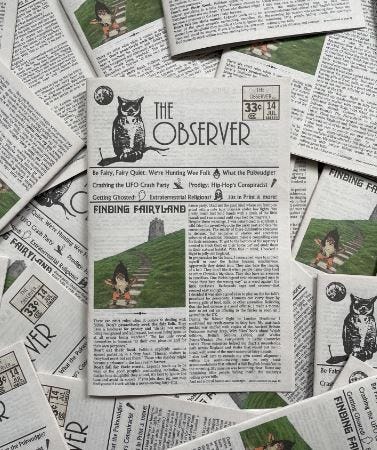Finding Fairyland, Part 1
The Observer heads to cheery ol' merry ol' England to corner some wee folk
There are strict rules when it comes to dealing with fairies. Don’t proactively seek the fair folk. They have a fondness for privacy and “dislike not merely being recognized and addressed, but even being seen, or at all events being watched.” The fae only reveal themselves to humans “at their own pleasure and for their own purposes.”
Don’t eat their food. Folklore explicitly cautions against partaking in a fairy feast: “Human visitors to Fairyland must not eat there.” Those who disobey might become a prisoner in the fairy realm forever.
Don’t fall for their music. Legends teach us to be wary of the good people’s enchanting melodies. No matter how delightful they sound, it’s best to ignore the tune and avoid its source. If you join their jig, you may find yourself stuck within a never-ending fairy-ring dance party. (And not the good kind where you bump-n-grind with a cute fairy princess under low lights. You pretty much just hold hands with a circle of the little rascals and run around until your feet disintegrate.)
Despite these warnings, I was determined to confront a wild fairy for myself—to poke the pisky nest and face the consequences. The reality of these diminutive creatures is debated, but centuries of stories and countless volumes of academic literature make a compelling case for their existence. To get to the bottom of the mystery, I needed to track them on their home turf and study them in their natural habitat. With this in mind, I booked a flight to jolly old England.
In preparation for the hunt, I researched ways to protect myself in case the fairies became mischievous. Apparently they detest iron. They also hate the ringing of a bell. They don’t like it when people name-drop God or other Christian big-shots. They also have an aversion to crucifixes. One Welsh legend even encouraged men to “wear their hats the wrong way” as a ward against the little tricksters. Backwards caps and crosses—that seemed easy enough.
I decided it was also a good idea to play on the fae folk’s penchant for generosity. Humans can curry favor by leaving gifts of food, milk, or other amenities. Believing that the best defense is a good offense, I made a mental note to set out an offering to the fairies as soon as I arrived in the UK.
During the 8-hour flight to London Heathrow I continued my crash-course in fairy lore. My seat-back pocket was stuffed with copies of the Ancient Britain Ordnance Survey Map, Wirt Sikes’ book about Welsh folklore, British Goblins (1880), and Walter Evans-Wentz’s The Fairy-Faith in Celtic Countries (1911). These resources helped me chart a meandering path across England and Wales that would put me in touch with some of the most notorious fairy haunts.
I also took care to encode my own sacred alignment within the route—making sure to only book accommodations that offered a full English breakfast in the morning. My mission was becoming clear: Roust any remaining little people hiding inside the country’s rolling green hills. And eat a lot of bacon and sausage.














This was great fun to read—I loved it!
But you’re definitely a braver man than I am. After reading the horror tales of the great Welsh writer Arthur Machen, encountering a genuine specimen of the Fair Folk while traipsing along a lonely footpath in the British countryside is just about my worst nightmare.
Sounds like a fun quest.